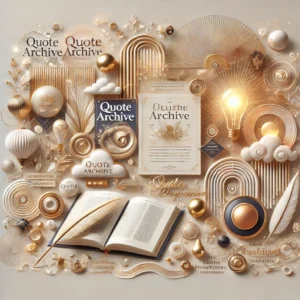The Evolution and Impact of “Prekldača” in Modern Language Translation
Language is the cornerstone of human communication, a bridge that connects people across different cultures and geographies. As globalization continues to shrink the world, the need for effective translation tools has never been greater. Among the many innovations in this field, the term “prekldača” (translators in Slovak) stands out as a significant development. This article delves into the evolution, technology, and impact of prekldača in the realm of modern language translation.
The Historical Context of Translation
The history of translation is as old as language itself. Early translators played a crucial role in the dissemination of religious texts, literature, and scientific knowledge. From the ancient Rosetta Stone to the medieval translation movements in the Islamic world and the Renaissance, translation has always been pivotal in bridging cultural and intellectual gaps.
However, traditional translation methods were labor-intensive and time-consuming. Translators relied on their linguistic skills and cultural knowledge, often working in isolation to produce accurate translations. With the advent of the printing press in the 15th century, the demand for translated works increased, necessitating more efficient methods.
The Birth of Machine Translation
The quest for automated translation began in the mid-20th century with the advent of computers. Early efforts in machine translation (MT) were driven by the need for rapid translation of technical documents, especially during the Cold War era. The first significant breakthrough came in 1954 with the Georgetown-IBM experiment, which successfully translated 60 Russian sentences into English using a simple rule-based system.
Despite initial optimism, progress in machine translation was slow. Early systems, based on rule-based and statistical models, struggled with linguistic nuances and cultural contexts, often producing awkward or inaccurate translations. However, these early efforts laid the groundwork for more sophisticated technologies.
The Emergence of Neural Machine Translation
The real revolution in machine translation came with the advent of neural networks and artificial intelligence in the 21st century. Neural Machine Translation (NMT) systems, such as Google Translate and Microsoft Translator, use deep learning algorithms to produce more accurate and natural-sounding translations. These systems learn from vast amounts of bilingual text data, capturing complex linguistic patterns and contextual nuances.
Prekldača, as a concept, embodies this transition from traditional to modern translation technologies. By leveraging the power of NMT, prekldača tools can provide real-time, high-quality translations across a wide range of languages, making communication more accessible and efficient.
How Prekldača Works
Prekldača tools are designed to facilitate seamless translation through advanced algorithms and user-friendly interfaces. Here’s a closer look at how these systems operate:
1. Data Collection and Training: NMT systems rely on large datasets of bilingual text to learn the intricacies of different languages. These datasets include texts from various domains, such as literature, scientific papers, and everyday conversations, ensuring comprehensive language coverage.
2. Model Architecture: Modern prekldača tools use sophisticated neural network architectures, such as the Transformer model, which excels at capturing long-range dependencies in text. These models consist of multiple layers of neurons that process and transform the input text into the desired output language.
3. Translation Process: When a user inputs text into a prekldača tool, the system encodes the text into a numerical representation, processes it through the neural network, and generates the translated text. The entire process happens in milliseconds, enabling real-time translation.
4. Continuous Improvement: NMT systems continuously learn from new data, improving their accuracy and fluency over time. User feedback and corrections also play a crucial role in refining the models, ensuring that the translations remain relevant and reliable.
Applications of Prekldača
The applications of prekldača are vast and varied, impacting numerous fields and industries. Here are some key areas where these tools are making a significant difference:
1. Business and Commerce: In an increasingly globalized economy, businesses need to communicate with clients and partners across different languages. Prekldača tools enable seamless multilingual communication, facilitating international trade and collaboration. From translating emails and documents to real-time chat translation, these tools are indispensable in the corporate world.
2. Education and Research: Prekldača tools are invaluable in academia, helping students and researchers access knowledge from different languages. Whether it’s translating research papers, educational materials, or online courses, these tools democratize access to information, fostering a more inclusive learning environment.
3. Travel and Tourism: For travelers, language barriers can be a significant challenge. Prekldača tools make it easier to navigate foreign countries, interact with locals, and understand signs and menus. Mobile translation apps, equipped with speech recognition and camera translation features, enhance the travel experience by providing on-the-go translations.
4. Healthcare: In the healthcare sector, accurate communication is critical. Prekldača tools assist medical professionals in communicating with patients who speak different languages, ensuring that instructions and medical histories are accurately conveyed. This can be particularly crucial in emergency situations where timely and clear communication can save lives.
5. Government and Public Services: Governments and public institutions use prekldača tools to provide services to diverse populations. From translating official documents and websites to facilitating communication in multilingual communities, these tools help ensure that public services are accessible to everyone.
Challenges and Limitations
Despite their many advantages, prekldača tools are not without challenges. Some of the key limitations include:
1. Context and Nuance: While NMT systems have made significant strides, they can still struggle with context and nuance, especially in idiomatic expressions and culturally specific references. This can lead to translations that are technically accurate but contextually inappropriate.
2. Data Privacy: The use of online translation tools raises concerns about data privacy and security. Users must be cautious when translating sensitive or confidential information, as it may be processed and stored by third-party servers.
3. Language Pair Limitations: While major languages are well-supported by prekldača tools, less widely spoken languages may not receive the same level of accuracy and fluency. This can limit the effectiveness of these tools for speakers of minority languages.
4. Human Touch: Automated translation tools lack the human touch, which can be crucial in certain contexts, such as literary translation or diplomatic communication. The subtleties of tone, emotion, and cultural context often require human intuition and expertise.
The Future of Prekldača
The future of prekldača tools is promising, driven by ongoing advancements in artificial intelligence and machine learning. Some potential developments include:
1. Improved Accuracy: As NMT systems continue to learn from larger and more diverse datasets, their accuracy and fluency will improve. This will enable more precise and contextually appropriate translations.
2. Multimodal Translation: Future prekldača tools may integrate multiple modes of input, such as text, speech, and images, providing more comprehensive translation solutions. For example, a traveler could use a single app to translate spoken conversations, written signs, and visual content seamlessly.
3. Personalization: AI-driven personalization could enable prekldača tools to adapt to individual users’ preferences and contexts. By learning from users’ previous translations and interactions, these tools could provide more tailored and relevant translations.
4. Integration with Augmented Reality (AR): The integration of AR with prekldača tools could revolutionize the way we interact with the world. Imagine pointing your smartphone at a foreign text and seeing an instant translation overlaid in your preferred language. This technology could transform everyday tasks and make communication even more intuitive and immediate.
In conclusion, prekldača tools have revolutionized the field of language translation, making it more accessible and efficient for users around the world. While challenges remain, ongoing advancements in AI and machine learning promise a future where language barriers are increasingly diminished, fostering greater understanding and collaboration across cultures. prekldača














Post Comment